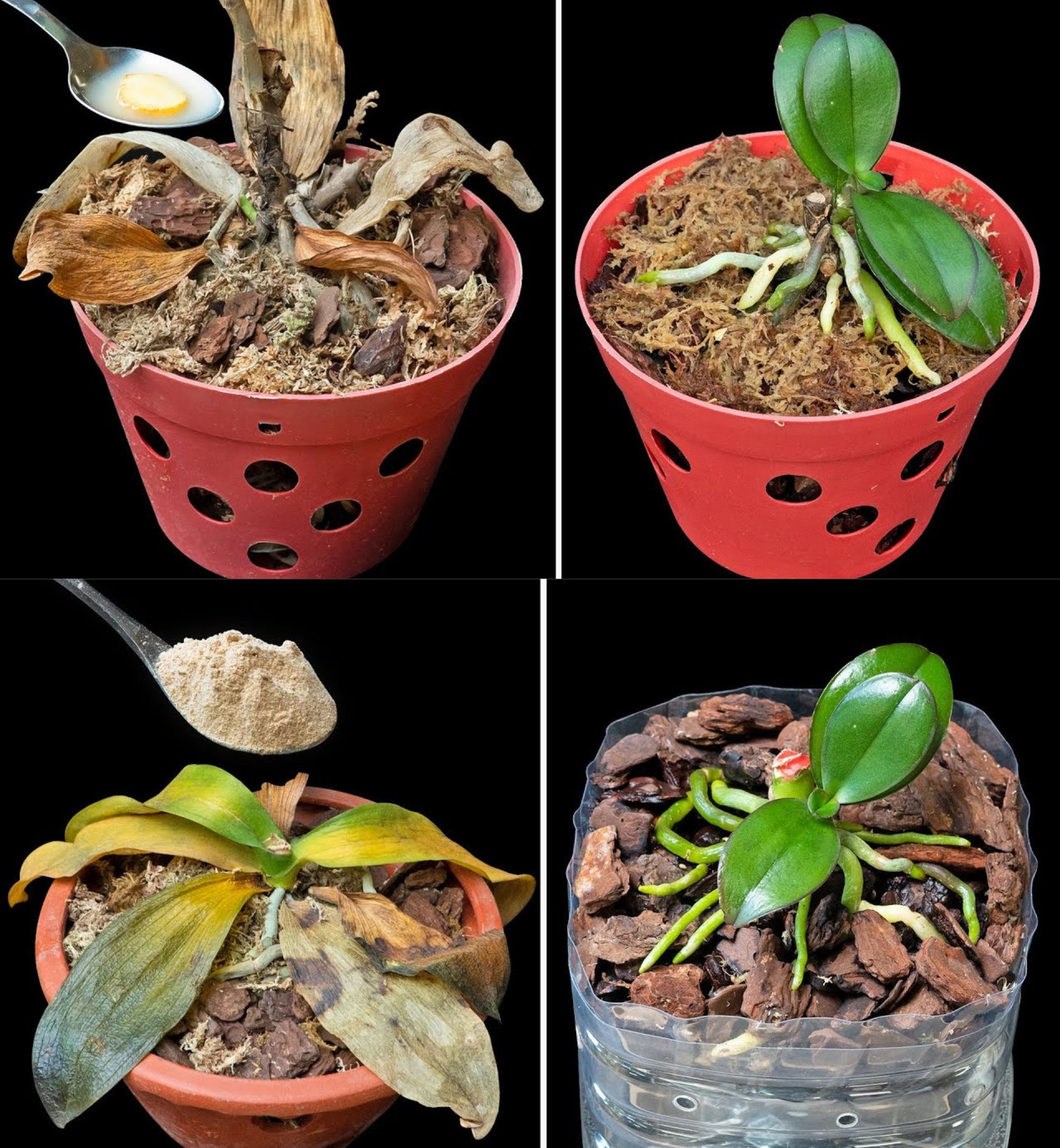
Reviving rotten orchids can be challenging, but one ingredient that works wonders for their recovery is cinnamon. Cinnamon has antifungal and antibacterial properties, which can help combat infections that may be causing the rot. Here’s a guide on reviving rotten orchids and tips on maintaining orchids to keep them healthy:
Reviving Rotten Orchids with Cinnamon:
- Identify the Rot:
- Remove the orchid from its pot and carefully inspect the roots.
- Trim away any soft, brown, or mushy roots using sterilized scissors or pruning shears.
- Apply Cinnamon:
- Dust the cut or damaged areas of the orchid roots with cinnamon powder.
- Cinnamon acts as a natural fungicide and can help prevent the spread of rot.
- Repotting:
- Repot the orchid in fresh, well-draining orchid potting mix.
- Ensure the pot has proper drainage holes to prevent waterlogging.
- Adjust Watering Routine:
- Allow the orchid to dry slightly between waterings.
- Water the orchid only when the top inch of the potting mix feels dry to the touch.
- Provide Adequate Light:
- Orchids typically prefer bright, indirect light.
- Avoid exposing them to direct sunlight for extended periods, as it can lead to leaf burn.
- Maintain Humidity:
- Orchids thrive in a humid environment. Consider placing a humidity tray with water near the orchid.
- Mist the orchid occasionally, especially in dry indoor environments.
- Proper Air Circulation:
- Ensure good air circulation around the orchid to prevent the development of fungal issues.
- Avoid overcrowding plants and allow for some space between them.
- Fertilize Appropriately:
- Use a balanced orchid fertilizer, and follow the recommended dilution and frequency.
- During the growing season, provide a slightly higher ratio of nitrogen for healthy foliage.
- Temperature Control:
- Orchids generally prefer temperatures between 60-80°F (15-27°C) during the day and slightly cooler at night.
- Protect them from drafts and sudden temperature changes.
- Regular Inspection:
- Regularly inspect your orchid for signs of pests, diseases, or any abnormalities.
- Address any issues promptly to prevent them from spreading.
- Pruning:
- Trim away dead or damaged leaves using sterilized tools.
- Pruning can promote new growth and improve the overall appearance of the plant.
Maintenance Tips for Healthy Orchids:
- Consistent Care:
- Provide consistent care to maintain a stable environment for your orchids.
- Observation:
- Pay attention to your orchid’s appearance, including leaves, flowers, and roots, to detect any issues early.
- Watering:
- Water the orchid thoroughly, but avoid waterlogged conditions.
- Use a well-draining potting mix.
- Fertilizing:
- Follow a regular fertilization schedule, but avoid over-fertilizing, as orchids are sensitive to excessive nutrients.
- Repotting:
- Repot orchids every 1-2 years to refresh the potting mix and inspect the roots.
By combining these strategies, you can revive a rotten orchid and maintain the health of your orchids over the long term. Remember that each orchid species may have specific care requirements, so tailor your care routine accordingly.
